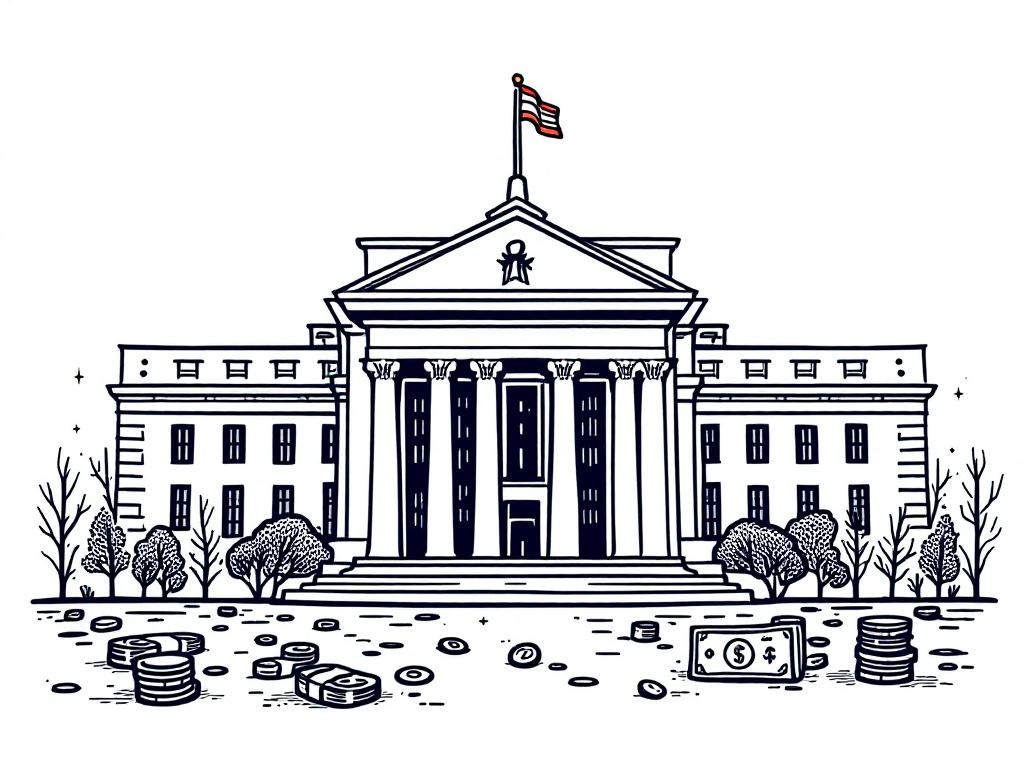Federal Reserve Holds Steady on Interest Rates Amid Inflation and Political Pressure

Washington, D.C., Friday, 18 July 2025.
The Federal Reserve maintains interest rates despite rising inflation and pressure from President Trump to lower borrowing costs, highlighting the complex economic landscape and potential future impacts.
Steady Rates Amid Economic Uncertainty
The U.S. Federal Reserve has decided to maintain its benchmark interest rates at 4.25%-4.50% as officials convene later this month despite increasing pressure from President Donald Trump to lower borrowing costs. This decision comes amid fears of rising inflation, with recent data showing the Consumer Price Index (CPI) increased to 2.7% in June 2025 from 2.4% the previous month [1][2]. While the Federal Reserve grapples with these economic indicators, the specter of political pressure looms large, as President Trump continues to vocally criticize Fed Chair Jerome Powell for not pursuing rate cuts [1][3].
Political Pressures and Economic Realities
President Trump’s demands for reduced interest rates have intensified, with reports suggesting that he even considered firing Jerome Powell, a move that could potentially lead to significant market disruptions. Despite these pressures, the Federal Reserve remains cautious about adjusting interest rates, particularly in light of upward pressures on inflation attributed, in part, to the President’s tariff policies [1][2][4]. Historically, the Federal Reserve has maintained independence from political influence, a principle that is currently tested as debate over monetary policy continues [5]. Powell’s term, which extends until May 2026, provides him with a buffer against political whims, although the ongoing tension has undoubtedly impacted the economic discourse [6][7].
Inflation’s Impact and Future Implications
The recent uptick in inflation is largely seen as a consequence of trade policies and other external factors. Insights from Federal Reserve officials suggest that while current inflationary pressures reflect temporary conditions, there’s an acknowledgment that if left unchecked, they may evolve into longer-term challenges [3][5]. Atlanta Fed President Raphael Bostic recently commented on the economy nearing an ‘inflection point’ with almost half of goods experiencing significant price increases [2]. The Federal Reserve is expected to closely monitor upcoming economic data in the months leading up to its September 2025 meeting, where additional rate cuts might be more earnestly considered [2][3].
Navigating Future Economic Challenges
As the Federal Reserve prepares for its forthcoming meetings, the balance between economic growth and inflation control remains delicate. The decision to retain current interest rates suggests a cautious approach to maintaining economic stability amid external pressures and market uncertainties [1][2][8]. Analysts expect that potential interest rate cuts could materialize by September 2025, contingent on further economic data and inflation trends. The Federal Reserve’s commitment to independent decision-making ensures that these choices are grounded in economic reality rather than succumbing to external political pressures [5][8].
Sources
- www.reuters.com
- www.pbs.org
- www.nytimes.com
- www.econlib.org
- www.cbsnews.com
- finance.yahoo.com
- www.investing.com